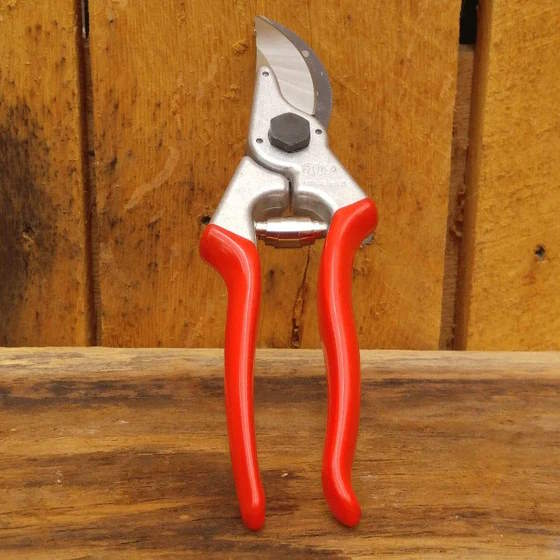How to prune a rose of Sharon – and when to trim to have a healthy and under-control shrub
Discover how simple it is to keep a rose of Sharon in top shape through trimming, as well as how you can rejuvenate an older shrub

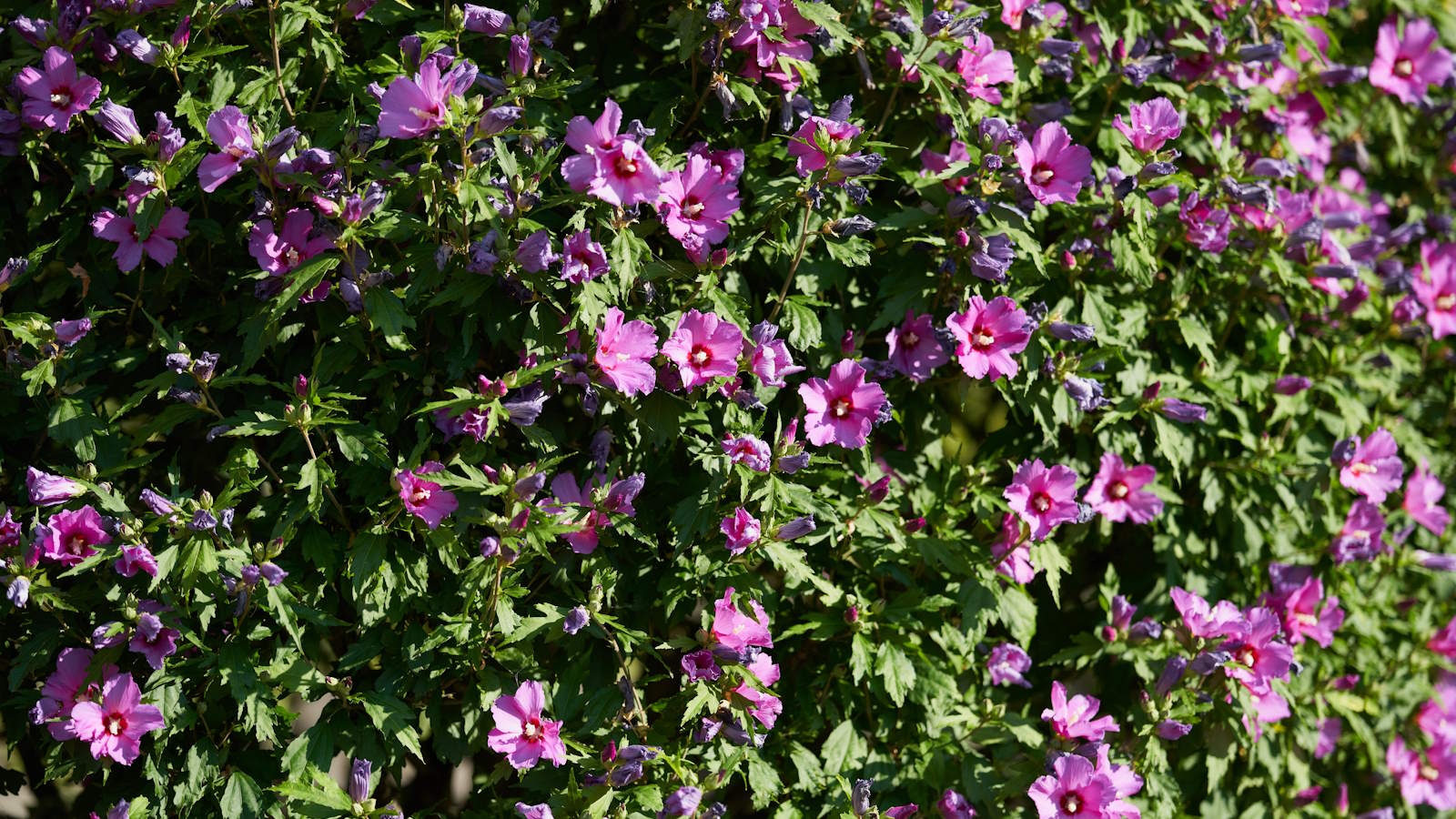
Rose of Sharon (Hibiscus syriacus) is a beautiful species of hibiscus native to Eastern Asia. It is a late-flowering shrub that puts on a dazzling display of showy trumpet-shaped flowers in July and August.
The flowering shrub can be a very low-maintenance option for the backyard, as it is both drought and heat-tolerant. Pruning is not always essential but is recommended, as a rose of Sharon is a fast grower and can be kept healthy and in shape through trimming.
Rose of Sharon is also notorious for self-seeding and is even classed as invasive in a small number of US states. Learning how to prune a rose of Sharon is key to controlling the dispersal of seeds, and addressing potential fears of plants invading a backyard.
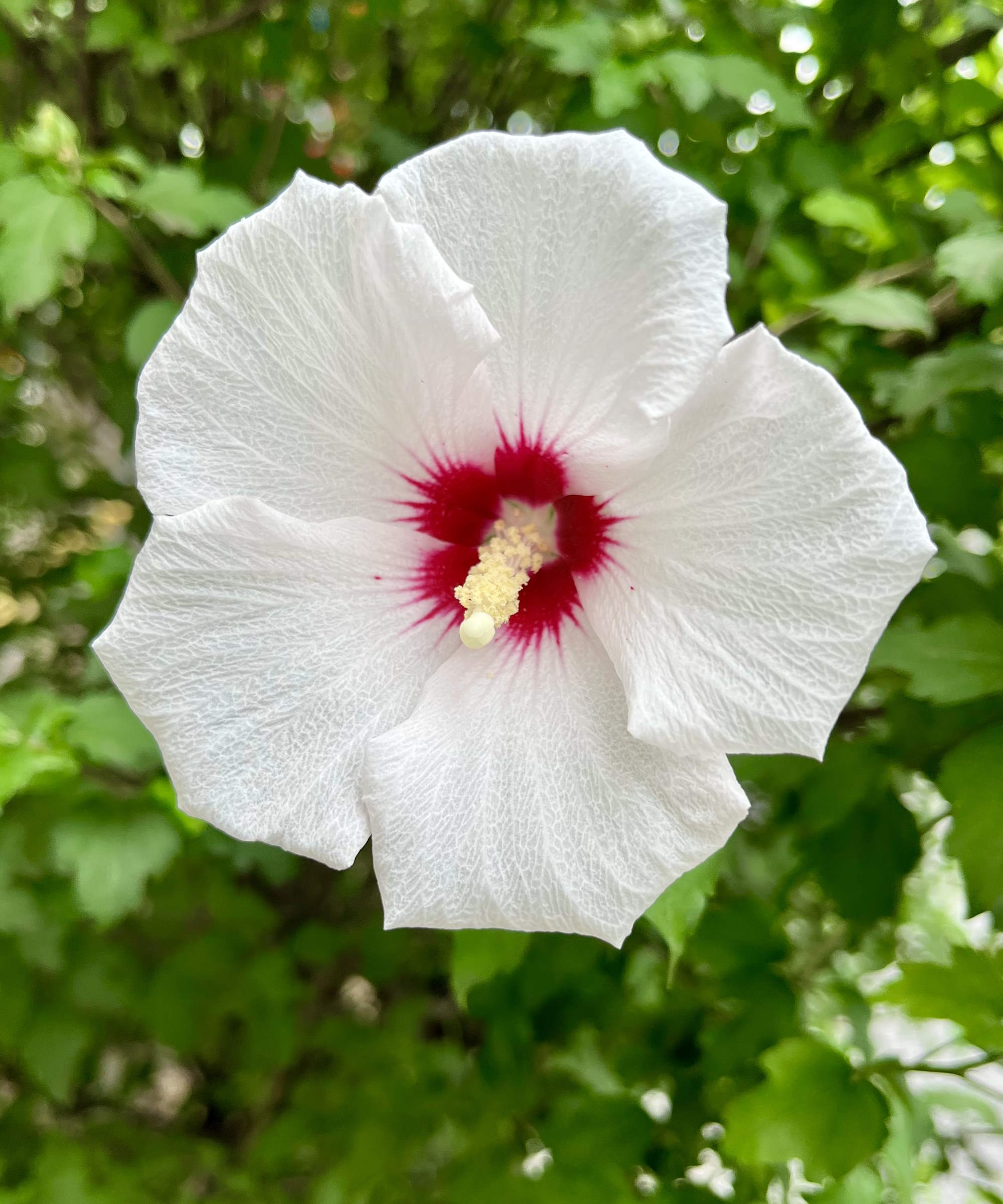
Many rose of Sharon varieties feature darker centers on the blooms
Do You Need To Prune A Rose Of Sharon?
Rose of Sharon shrubs only sometimes need pruning every year and they can continue to put on a great display without being trimmed annually.
They are fast-growing shrubs so do benefit from pruning at least every few years to keep them compact and healthy. Not pruning a rose of Sharon can result in long branches unable to support the weight of the leaves and blooms.
When to prune a rose of Sharon
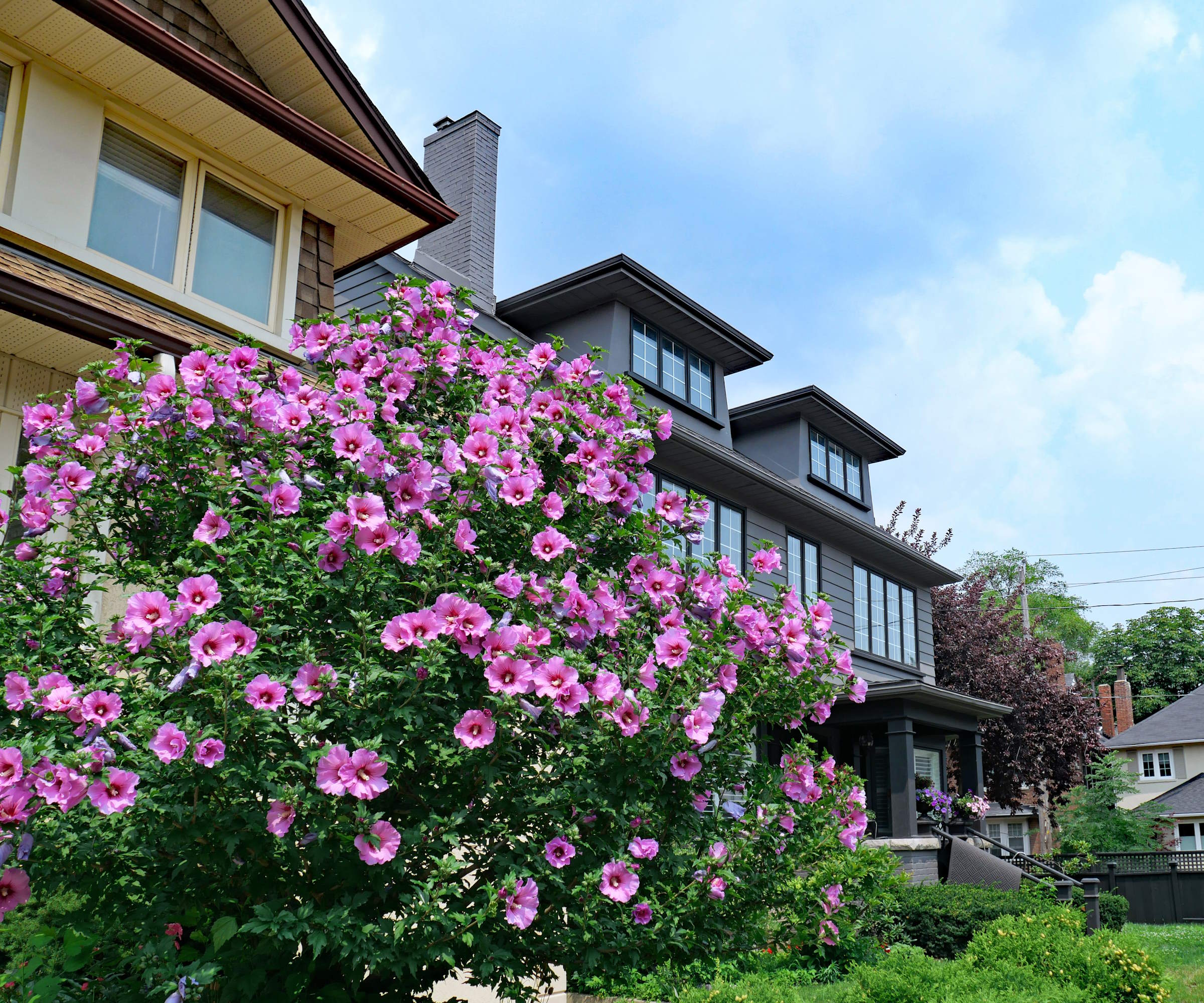
A rose of Sharon blooms plentifully in mid-summer
The time to cut back a rose of Sharon is during the plant’s dormancy period and the ideal moment will come just before the plant starts to actively grow again in spring. The exact time to prune will depend on your climate and US hardiness zone and it can vary widely, potentially anywhere from pruning in March to May.
‘The optimal time for pruning rose of Sharon is late winter or early spring before new growth begins,’ says Marco Picano from Picano Landscaping in Massachusetts. ‘By pruning in this window, you allow the plant to direct its energy into producing robust new shoots that will bear flowers.’
Design expertise in your inbox – from inspiring decorating ideas and beautiful celebrity homes to practical gardening advice and shopping round-ups.
It is not advised to wait too long to prune after the shrub has started growing again. As a rose of Sharon blooms on buds produced on new wood in spring, you can risk cutting off emerging buds that will impact your display that year.
Rose of Sharon is a very delicate plant that can suffer from shock if they are pruned both too early and too late. It makes getting the timing right very important if you want to avoid making a pruning mistake and have a healthy shrub. A shocked and stressed plant can be at an increased risk of pests and diseases.
How to prune a rose of Sharon
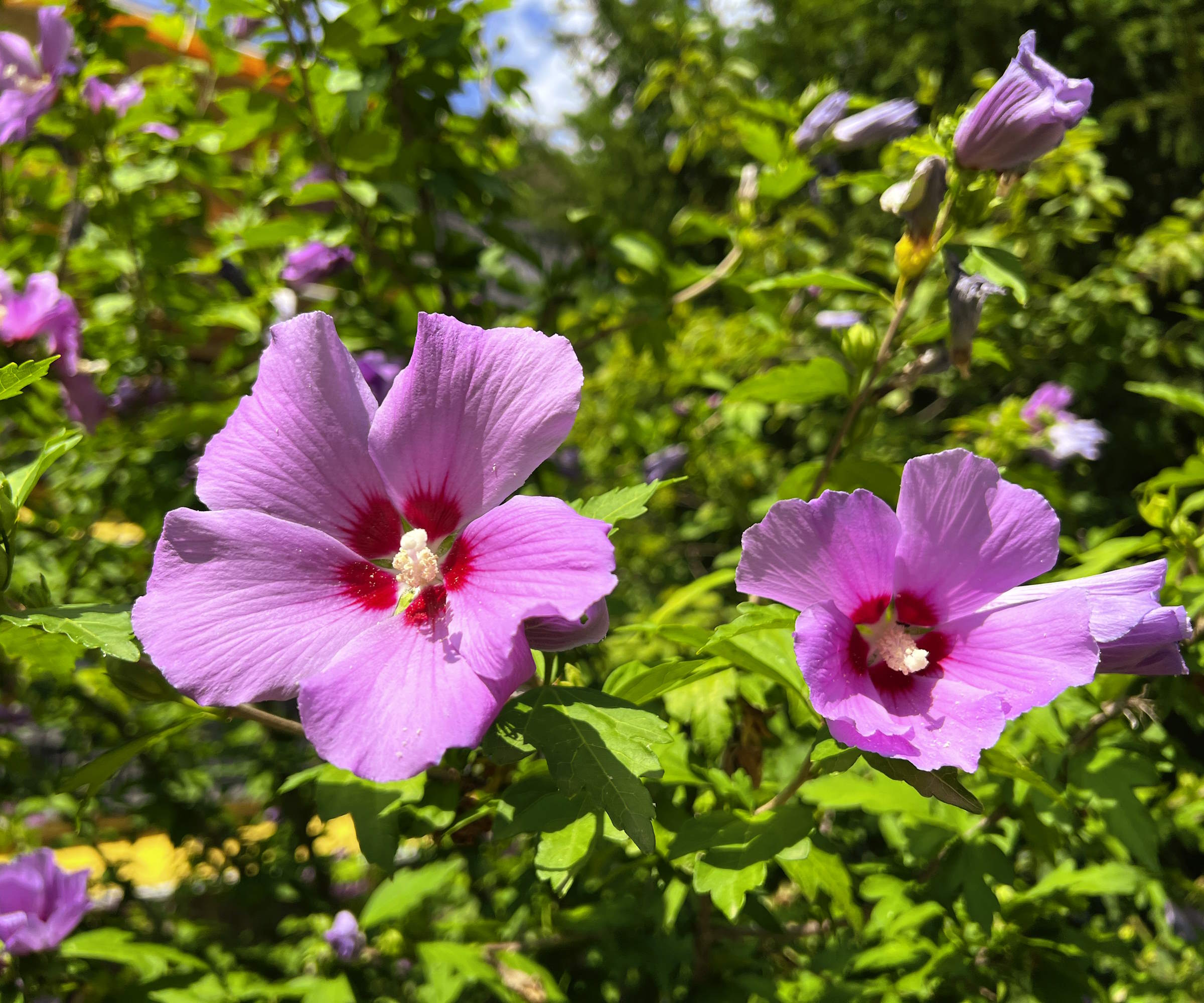
Rose of Sharon blooms on new wood produced that year
Always make sure that any garden tools used for pruning, including pruning shears and loppers, are clean and sharp before heading out to do any trimming. Clean garden tools will mean the pruning is simpler and the cuts you make are cleaner and easier for the plant to heal. A simple tool such as this pocket blade sharpener, available at Amazon, can help you keep cutting tools sharp out in the yard. Sterilizing the blades before pruning also eliminates the risk of transmitting diseases around the garden.
There are a few simple tips to follow for correctly pruning a rose of Sharon:
- Assess the plant and remove any dead, damaged, or diseased branches. You can prune branches back to healthy wood or remove them completely from the shrub.
- Remove any weak branches or branches going in unwanted directions, such as towards the center of the plant, and any crossing branches as these can rub and create entry points for diseases. Pruning out these branches will help to open the center of the shrub to improve air circulation and light penetration.
- Focus then on shaping the shrub by pruning selected stems, either back to above a set of two leaves or to the ground. It is safe practice to obey the one-third pruning rule and only prune up to a third of the plant in one go.
- Gently trim the tips of selected branches to encourage bushier growth and the development of lots of flowers. Make cuts at a 45-degree angle and to outward-facing buds to stimulate outward growth.
- Remove any suckers that are growing from the base of the plant. These suckers take nutrients away from the rest of the plant and want to be removed as close to the ground as possible.
You can take a different approach with a rose of Sharon that needs rejuvenation. Samuel Davis, a seasoned horticulturist with London Gardeners, says: ‘Rose of Sharon tolerates hard pruning well, especially if it's overgrown or you wish to rejuvenate an older shrub. However, severe pruning should be done sparingly, as it can stress the plant.’
Hard pruning can keep the rose of Sharon compact and rejuvenate older plants as the branches can be cut down by around two-thirds of their length and they will recover. It can revitalize the shrubs, but the caveat is that you do miss out on a display of blooms that particular year.
Kaitlyn Peake, CEO of the landscape architecture firm CMLA, does recommend one extra maintenance task that should be considered if you do severely prune an older rose of Sharon. She says: ‘If you perform a hard prune, it's a good idea to use a slow-release fertilizer before the plant pushes new growth. 10-10-10 will do.’
An example of a slow-release fertilizer that could be used in that situation would be this all-purpose flower and vegetable feed, available at Amazon.
FAQs
Should I deadhead my rose of Sharon?
It is beneficial to deadhead a rose of Sharon once they have finished flowering. Unlike deadheading other plants, such as deadheading roses or deadheading dahlias, it will not encourage another flush of flowers. Instead, it prevents the rose of Sharon from self-seeding around the garden. They are notorious for self-seeding and spreading, so deadheading before the blooms start to turn brown can prevent this from happening in your backyard.
Rose of Sharon may be a highly popular species of hibiscus, but it is one of many types of hibiscus that can be added to people’s backyard ideas. There is hardy and tender hibiscus to grow, depending on your location, and both evergreen and deciduous types to choose from, as well as blooms coming in practically every color imaginable.
For more advice, see our guide on why is my rose of Sharon turning yellow, to troubleshoot any pest or problems impacting on your shrub.

Drew has worked as a writer since 2008 and was also a professional gardener for many years. As a trained horticulturist, he worked in prestigious historic gardens, including Hanbury Hall and the world-famous Hidcote Manor Garden. He also spent time as a specialist kitchen gardener at Soho Farmhouse and Netherby Hall, where he grew vegetables, fruit, herbs, and cut flowers for restaurants. Drew has written for numerous print and online publications and is an allotment holder and garden blogger. He is shortlisted for the Digital Gardening Writer of the Year at the 2025 Garden Media Guild Awards.
